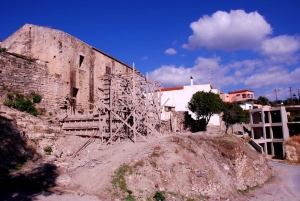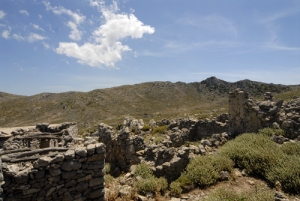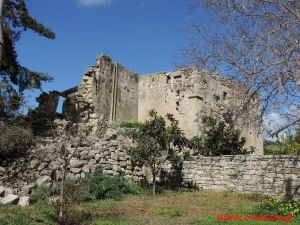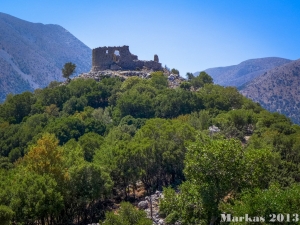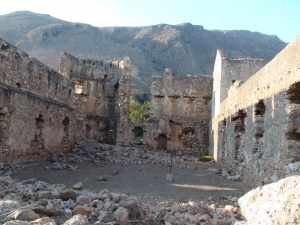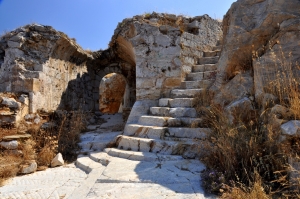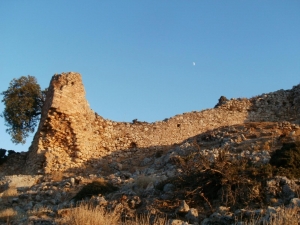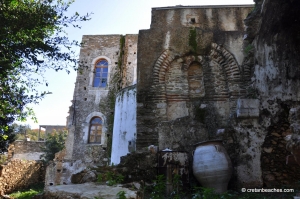The picturesque Venerato village, located 20km from Heraklion, was in the 16th-century the resort of the Venetian lords. It was so pleasant for them stay here, that they compared the village to Venice.
A small castle was located near the village Sitanos of Sitia Region, namely Skalia. Skalia was a small village with a few residents built atop a mountain slope, where the outer walls of the houses formed a wall that surrounded the village, while from the north it was protected by cliffs.
Agriolidis was a terrible janissary in Messara plain, who lived during the Greek revolutions of 1821. He resided in a 17th century chateau in the village of Agios Ioannis, near Phaestus, which still survives.
Askyfou Plateau, about 50km south of Chania city, is located in a strategic position and is formed on the passage that connects the southern shores of Sfakia to the north coasts of Crete. Sfakia did always breed great revolutionaries and the Turks always wanted to control them. Thus, in response to the Cretan Revolution of 1866, they began construct Koules, i.e. small castles, in the most important locations of Sfakia.
Above Loutro there are still the ruins of the Turkish fortress, Koules, which dominated over the current settlement. The building was built in 1868 and had two towers on west and east sides. It has rectangular shape and some of its walls survive. Outside the walls, there are big tanks surviving.
The Venetian fortress of Paliokastro is located 14km west of Heraklion, on the west side of Heraklion Bay. Today, only a part of the walls of the triangular fort remains alive. The fort was built on a big tall rock, near which passes the highway of Heraklion - Chania.
Kastelos Hill is located 8 km west of the city of Chania and 15 km east of the village Varipetro of Province Cydonia. It is a walled citadel (acropolis) at an altitude of 250m. The hill is considered to have been inhabited since the Minoan Era, to the medieval Times.
Although it cannot be classified as a defensive tower, however, it has prevailed with the name of Tower. The tower, which belonged to George and Francesco Modinos, still survives in very good condition. It is attached to the scenic old church of Panagia Rogdia.











